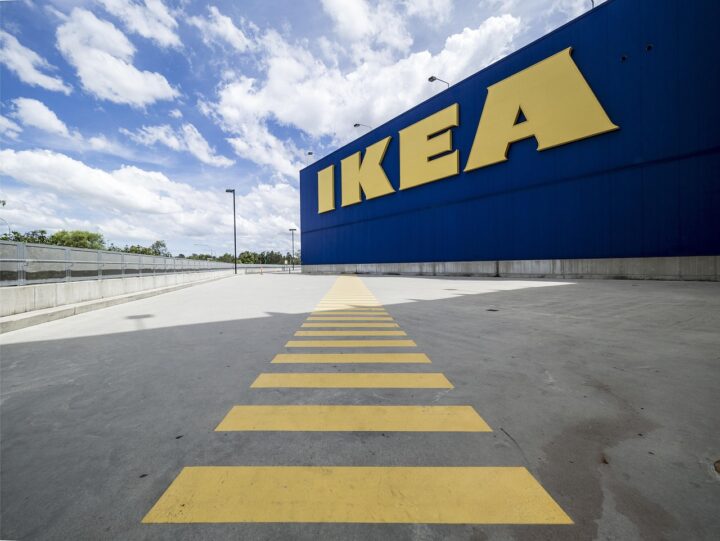Do you know what IKEA means?
It stands for its founder, Ingvar Kamprad, his family farm Elmtaryd and the nearby village, Agunnyard – making the acronym IKEA.
It also stands for the place where you purchase furniture that you have to build!
We all know the story of the foolish man building his house on sinking sand and the wise man constructing his house on a good foundation. In fact, last year’s Guild talk was on this very theme, ‘Sure foundations’, when, in the large hall, we played the game, Jenga, to see how well we could build and then take away without our tower falling.
So, I was intrigued when the news recently shared a story of a church in Kiruna, Sweden. Seemingly, the landmark 113-year-old church was at risk from subsidence and because of this was re-located in its entirety – 3 miles along the road. The vast red timber structure dating back to 1912 was hoisted onto giant rolling platforms and began its move to the new city centre. The journey took two days.
The old city centre is at risk from ground fissures after more than a century of iron ore mining. The church’s move is the most spectacular and symbolic moment of the wider relocation of buildings in Kiruna, which lies 145km north of the Arctic Circle.
The church is 115ft high, 40m wide and weighs 672 tonnes. Relocating such a large building is an unusual feat. But instead of dismantling it, engineers moved it in one piece, supported by steel beams and carried on self-propelled modular transporters.
We know from our Church history, when denominations came back together, there were too many buildings, and we have been suffering with the excess ever since: buildings across the road from each other, built in the churches’ heyday, to the glory of God of course, massive constructions that we now know are impossible to maintain in a changing world.
And as you know, as I often said, by putting down roots, we have lost the principle of a faith on the move. If anything, the Church in Sweden is an example in one way of a church being where the people are and if not, to move to where they are.
As new areas developed, the church has tried to re-build, in what was called church extension charges, in fact, where my first charge was in Paisley was exactly that, as a new scheme grew up at the bottom of Gleniffer Braes.
But there is a deeper message here.
It is not just about buildings or putting down roots but where foundations really are. Whether we like it or not the church is just a conduit and a channel. If a building is no longer functioning and is out-of-date, if a service does not meet the needs anymore then we move on – because where we put our faith should always be on Christ alone.
Of course, where we meet is important. Of course, worshipping as a community, where we gain strength from each other and from God is a must to keep the fire within burning brightly, but it is Jesus we rest, and we rise.
Dare I suggest that the church is on sinking sand, not just in the present as it tries to find stability through this Mission Plan. It is on sinking sand for we have made the mistake of worshipping where we are, idolising the way things have been done – our own golden calves.
As I watched the church in Sweden move slowly down the street, at a push, at 5 metres an hour, Keith Getty’s words came to mind:
In Christ alone my hope is found,
He is my light, my strength, my song…
Here in the love of Christ I stand.
And so, to another session. A new time, with new things started, especially around our buildings – but, as always it is on Christ, with Christ and for Christ, that we make our decisions and carry out service in his name.
I hope you have had a lovely summer.
May you be like the Carpenter and create with him.
Your friend and minister,
George C Mackay


